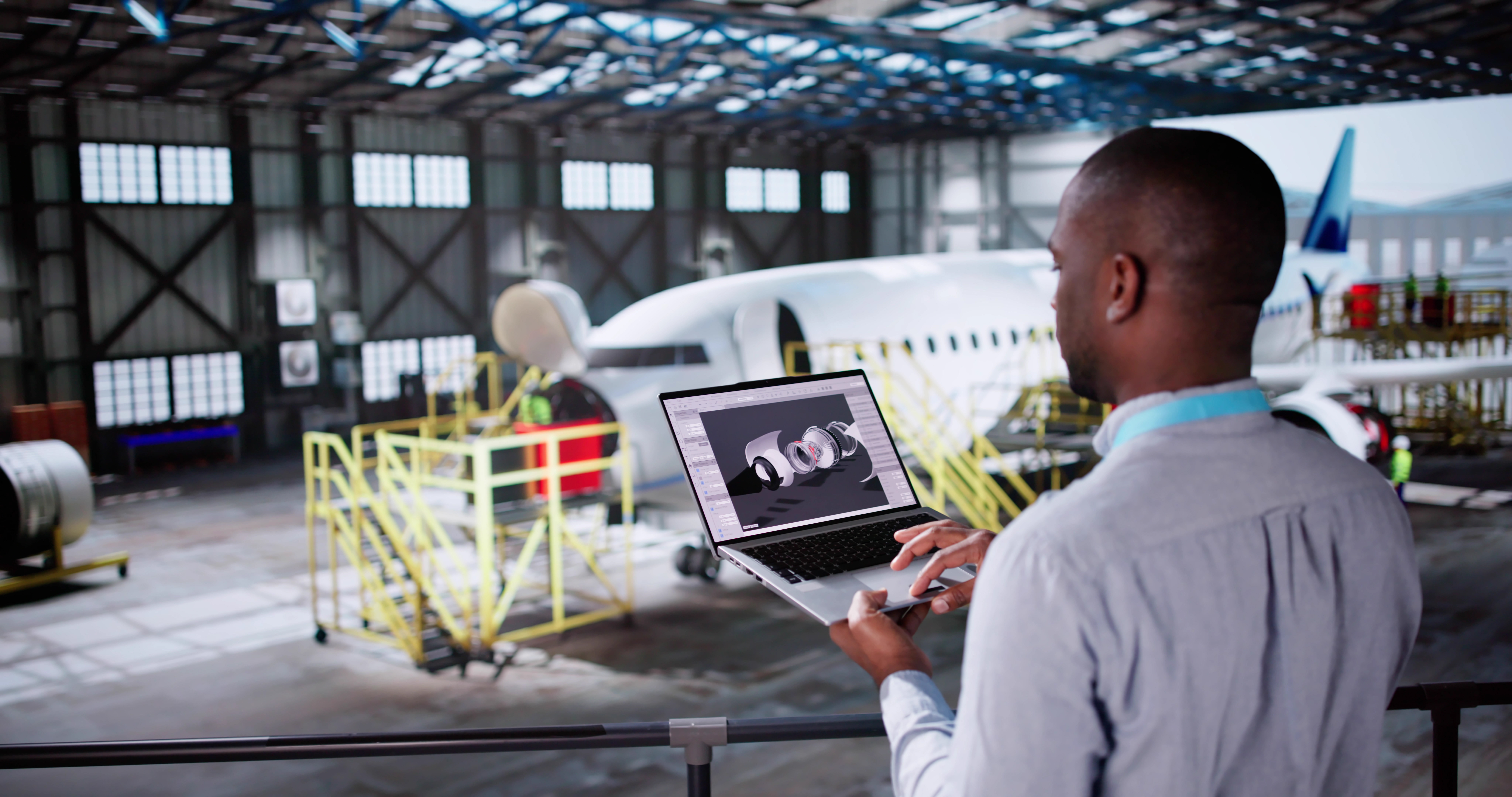When people think of the aerospace industry, they picture jet engines, satellites, and cutting-edge aircraft. But behind every safe takeoff, high-altitude maneuver, or mission to outer space, there’s an invisible but critical force at work: aerospace standards.
These documents might not grab headlines, but they ensure that complex systems are built to work safely, reliably, and in compliance with a growing web of regulations. Whether you’re in commercial aviation, military aircraft development, or space exploration, standards form the backbone of product safety, performance, and innovation.
In this blog post, you’ll learn:
- Why standards are so important to the aerospace and defense industry, and the challenges companies face managing them
- How regulations around the world are deeply intertwined with national aerospace standards
- Which top standards you need to know—across civil, military, and space sectors—and how they’re helping shape the future of flight
Why aerospace standards matter
In the aerospace and defense industry, engineering standards are the backbone of safe and reliable product development. Aerospace standards ensure that manufacturers, suppliers and engineers are all working from the same specifications, enabling them to produce safe and reliable products from aircraft to military spacecraft.
These standards define processes, testing protocols, design specifications and quality assurance benchmarks for everything from avionics systems to engines. Without consistent adherence to aerospace industry standards, the risk of equipment failure, certification delays or legal noncompliance increases dramatically – particularly in high-risk environments like outer space exploration, military aircraft operations and civil aviation.
Aerospace standards are closely linked with regulatory authority requirements. Agencies like the Federal Aviation Administration (FAA) and the European Union Aviation Safety Agency (EASA) often incorporate industry-developed standards into their regulations, making standards essential for companies that want to maintain certification and compliance.
Common compliance challenges in the aerospace industry
Like many heavily regulated industries, the aerospace industry faces several hurdles when it comes to standards and compliance:
- Knowledge management: the global aerospace industry is regulated by a wide range of national and international agencies, each of which uses different standards. Aerospace and aviation projects typically involve many stakeholders and may span multiple jurisdictions, making it challenging for engineers and compliance managers to juggle project requirements.
- Evolving standards and regulations: aerospace projects can last years or even decades. By the time a project reaches the final stages, the standards and regulations used to define the initial project requirements may have changed. Engineers must continually monitor for standards/regulatory updates and assess how any changes could affect design, testing or certification.
- Supply chain disruptions: the aerospace supply chain is global, complex and increasingly fragile. Counterfeit parts, restricted component availability due to export laws and tariffs present new challenges for the industry every day. Manufacturers need robust configuration management practices to ensure traceability and compliance.
- Loss of institutional knowledge: retirements and a talent shortage in the aerospace industry has left many companies vulnerable to knowledge loss.
Learn about our solutions for managing requirements
Major regulatory bodies in the aerospace industry
Regulations and standards go hand in hand. On their own, standards are not legally required – they are guidance and best practices developed by industry experts. However, many regulations reference standards and enforce their use for safety, environmental and operational compliance.The aerospace industry is highly globalized, with aircraft, components and systems often manufactured in one country and certified or operated another. Companies must keep pace with a variety of regulatory authority requirements across jurisdictions.
| Region/Country | Civil Aviation Regulator | Defense Regulator(s) | Space Regulator/Agency |
|---|---|---|---|
| United States | FAA | DoD DCMA |
NASA |
| United Kingdom | CAA | MOD | UK Space Agency |
| Canada | TCCA | DND | CSA |
| Europe (EU) | EASA | EDA | ESA |
| Japan | JCAB | ATLA | JAXA |
| Australia | CASA | Australian DoD | Australian Space Agency |
| Brazil | ANAC | Brazilian Ministry of Defence | AEB |
| Singapore | CAAS | DSTA | OSTIn |
| India | DGCA | Ministry of Defence – India | ISRO |
Some of the major aerospace, defense and civil aviation regulatory bodies around the world.
Key aerospace standards and their applications
The aerospace industry includes several overlapping, but distinct, subsectors:
- Commercial and civil aviation: passenger and cargo aircraft, commercial airlines and general aviation
- Defense and military aviation: military aircraft, defense systems, weapons platforms and surveillance drones
- Space exploration: satellites, launch vehicles and outer space missions (commercial or governmental)
Example of a U.S. Military Specification (MilSpec) that defines standard practices for system safety
Although each of these subsectors has its own certification pathways, they often share suppliers, components and technologies. Many aerospace standards are applicable across multiple domains.
Some of the top SDOs and engineering standards for the industry include:
SAE International (Society of Automotive Engineers)
- SAE AS9100D – Quality Management Systems for Aviation, Space, and Defense Organizations
- SAE ARP4761A – Guidelines and Methods for Performing the Safety Assessment Process
- SAE AS9145 – Aerospace Series: Requirements for Advanced Product Quality Planning and Production Part Approval Process
NASA (National Aeronautics and Space Administration)
- NASA STD-8739.8 Rev. A – Software Assurance and Software Safety Standard
- NASA STD-5001 Rev. B W/CHANGE 3 – Structural Design and Test Factors of Safety for Spaceflight Hardware
- NASA HDBK-4001 – Electrical Grounding Architecture for Unmanned Spacecraft
U.S. Military Specifications (MilSpecs)
- MIL-STD-810H – Environmental Engineering Considerations and Laboratory Tests
- MIL-STD-882E – System Safety
- MIL-STD-1472G – Human Engineering Design Criteria for Military Systems
National Aerospace Standards / Aerospace Industries Association (NAS/AIA)
- AIA NAS411 – Hazardous Materials Management Program
- AIA NAS412 – Foreign Object Damage (FOD) Prevention
- AIA NASM47196 – Preparation For And Installation Of Buck-Type Rivets
ISO (International Organization for Standardization)
- ISO 17666 – Space Systems – Programme Management – Risk Management
- ISO 24113 – Space Systems – Space debris mitigation requirements
- ISO 14721 – Space Data System Practices – Reference model for an open archival information system (OASIS)
RTCA (Radio Technical Commission for Aeronautics)
- RTCA DO-178C – Software Considerations in Airborne Systems and Equipment Certification
- RTCA DO-160G – Environmental Conditions and Test Procedures for Airborne Equipment
- RTCA DO-254 – Design Assurance Guidance for Airborne Electronic Hardware
How aerospace standards are developed: the role of industry experts and working groups
The development of aerospace standards is a collaborative process led by industry experts, regulators, manufacturers, suppliers, and research institutions. These professionals contribute their technical knowledge to define best practices, resolve interoperability challenges, and ensure that standards reflect current technologies and operational needs.
How the Process Works
- Standards Development Organizations (SDOs) such as SAE International, the Aerospace Industries Association (AIA), and EUROCAE oversee the creation and maintenance of standards.
- These organizations form working groups made up of engineers, scientists, regulators, and technical experts across the aerospace industry.
- New standards are typically developed in response to emerging technologies, industry gaps, or regulatory needs. They undergo multiple rounds of review, public comment, and consensus-building before publication.
Participating in standards development has many benefits for organizations and engineers. They can help influence the direction of the industry, develop new professional skills and build a network of peers in the industry.
Benefits of compliance with aerospace standards
Compliance with recognized aerospace, defense and aviation standards is essential. It protects human lives, reduces legal risk and helps companies build a competitive edge in the global aerospace industry:
- Safety and product reliability: standards help ensure aircraft, spacecraft and components are thoroughly tested, reducing the risk of catastrophic failures.
- Regulatory and legal compliance: many aerospace industry standards are directly referenced in regulatory authority requirements. Compliance helps avoid fines, certification delays and legal risks
- Competitive advantage: adhering to standards shows customers – like Boeing or Lockheed Martin – that your company produces high-quality, reliable products. It builds trust, reduces warranty claims and helps you exceed customer expectations.
- Supply chain efficiency: standards streamline collaboration across the global aerospace supply chain. The ensure parts compatibility, reduce rework and support effective configuration management.
Technological advancements and future trends in the aerospace/aviation industry
As the aerospace industry evolves, emerging technologies are reshaping how aircraft, spacecraft, and supporting systems are developed, maintained, and certified. These technological advancements present new opportunities—and new challenges—for engineers, regulators, and standards developers alike.
Emerging technologies in aerospace and aviation include:
- Sustainable Aviation Fuel (SAF): SAF reduces carbon emissions and is being embraced by airlines and aircraft manufacturers to meet environmental goals.
- Hybrid and Electric Aircraft: Battery and hybrid propulsion technologies are under development to support cleaner flight.
- Reducing Aircraft Noise Emissions: Regulations and public demand are driving innovations in engine design, airframe shape, and operational procedures to reduce noise pollution.
- Additive Manufacturing: Also known as 3D printing, this technology is transforming part production by enabling lightweight designs, faster prototyping, and localized manufacturing.
- Advanced Air Mobility (AAM): Urban air taxis, electric vertical takeoff and landing (eVTOL) aircraft, and drone delivery systems are shaping a new aviation frontier.
- Space Exploration and Commercial Spaceflight: From NASA’s Artemis missions to private ventures like SpaceX and Blue Origin, outer space is an expanding market for both government and commercial players.
- Hypersonic Technologies: The defense industry is investing heavily in hypersonic vehicles, which require new standards for materials, guidance, and heat shielding.
As new technologies emerge, so do new risks, materials, and system architectures. Standards play a critical role in establishing new best practices (particularly in fields where regulations are still under development), providing a framework for verification and testing of novel systems, and helping manufacturers and suppliers align on terminology, performance and safety benchmarks.
For example:
- SAE has developed standards for additive manufacturing in aerospace (e.g., AMS7003).
- ASTM and RTCA are working on frameworks for urban air mobility and drone integration.
- NASA and the Aerospace Industries Association (AIA) are publishing roadmaps for sustainable space operations.
As innovation accelerates, collaboration between SDOs, regulatory bodies, and the engineering community will be essential to ensure that aerospace industry standards keep pace with change—without compromising quality, product safety, or reliability.
Ready to simplify your standards workflow?
In today’s complex and rapidly evolving aerospace industry, staying aligned with the right standards is essential. From enhancing safety and reliability to meeting regulatory authority requirements, the role of aerospace standards is foundational across every domain—civil aviation, military aircraft, and spacecraft development.
Whether you’re navigating global compliance, working through multi-year programs, or integrating the latest technological advancements, Accuris can help you manage and access all the national aerospace standards you need—without the confusion or the risk.


